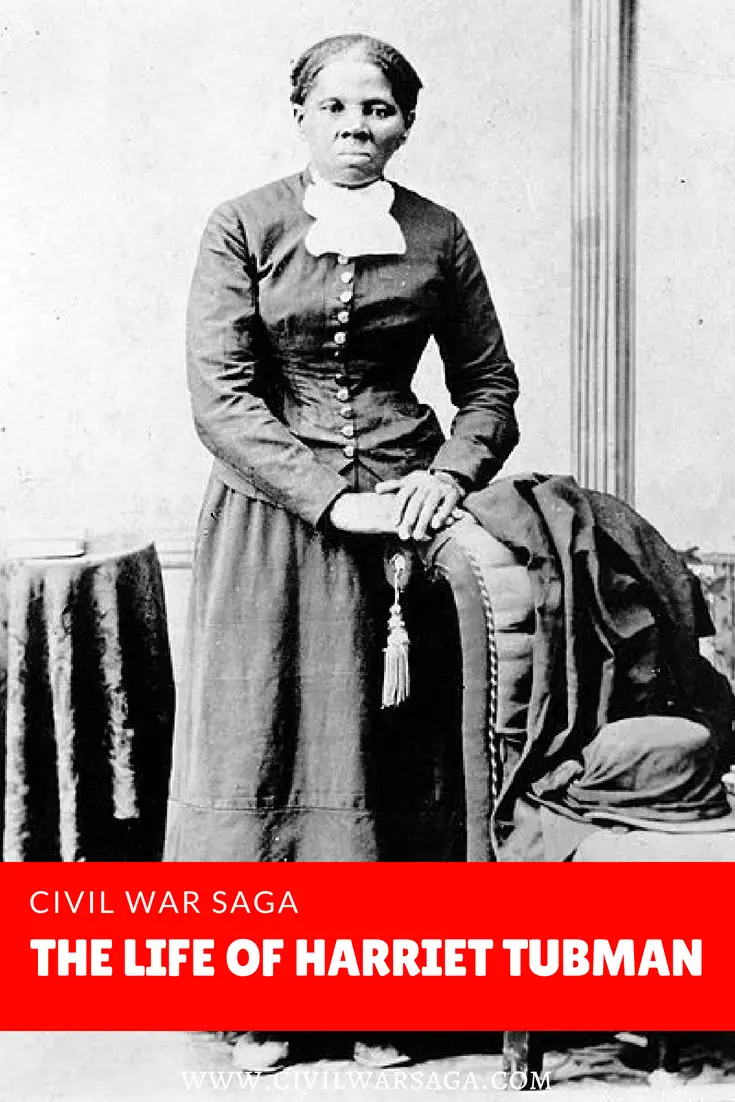Harriet Tubman was an escaped slave, an abolitionist and one of the most famous conductors of the Underground Railroad.
Tubman made a total of 19 trips between the north and the south over 10 years and brought 300 slaves to freedom, including her own family.
Known as a fearless and determined conductor, Tubman risked her own life and freedom many times to give others the freedom they sought.
Harriet Tubman’s Childhood and Early Life:
Harriet Tubman’s name at birth was Araminta Ross. She was the 11th child of two slaves named Benjamin Ross and Harriet Greene.
Tubman’s parents were the descendants of slaves brought from Africa in the mid-1700s. Harriet went by the nickname “Minty” in her youth and did not begin calling herself Harriett until she was an adult.
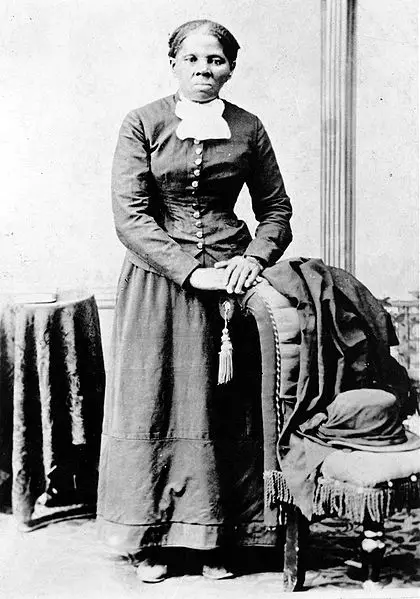
Harriet Tubman in 1870
Tubman was born on a plantation owned by Edward Brodess near Bucktown, Maryland sometime around 1820. Her exact birth date is unknown because slave owners did not keep records of their slaves birth dates.
At the age of six, Tubman began working as a house servant at a nearby plantation. Then at the age of 12 she was sent to work in the fields on Brodess’ plantation.
Tubman suffered a long-term brain injury as a teenager when an overseer threw a heavy weight at another slave and hit her instead. Her injury caused her to faint and lose consciousness often.
Harriet Tubman’s Marriage:
In 1844, at the age of about 25, Harriet met a man named John Tubman. John was a freeman who lived in a nearby cabin. Harriet gained permission from her master to marry him and live in his cabin but she had to continue working for her master.
Harriet Tubman worried she may one day be sold and her marriage would be split apart. She considered escaping with her husband and traveling north to a free state.
John did not support this plan and said he wanted to stay in the south. When Harriet stated she would leave without him he threatened to tell her master.

Woodcut of Harriet Tubman during the Civil War
Harriet Tubman’s Escape from Slavery:
In September of 1849, after hearing rumors that she was about to be sold and realizing her husband didn’t support her dream of attaining freedom, she left him behind one night and headed north with her two brothers, Harry and Ben. Her brothers quickly change their mind though and the three head back to the plantation shortly after.
In October, Harriet made a second escape by herself using the Underground Railroad. With the assistance of a local abolitionist, Harriet was given the address of the closest station on the underground railroad. There she was hidden in a wagon and driven to her next destination.
She continued following the underground railroad until she hitched a ride with a married couple who took her to Philadelphia.
After reaching Philadelphia, Harriet later explained, “I looked at my hands to see if I was the same person now I was free. There was such a glory over everything … and I felt like I was in heaven.”
Once in Philadelphia, Harriet found work cooking and cleaning and saved her money so she could return to Maryland and rescue her sisters and brothers.
Harriet Tubman and the Underground Railroad:
Tubman met many station masters and conductors of the underground railroad while living in Philadelphia. She learned everything she could about how the system of safe houses worked and made her first trip back to Maryland in 1850 to rescue her sister and her sister’s two children.
Tubman sent a message for them to take a boat and meet her at Bodkin’s Point in Maryland. From there, Harriet lead them from station to station along the underground railroad until they finally reached Philadelphia.

Reward Notice for Harriet Tubman, circa 1849
Later that year, Tubman was made an official conductor on the underground railroad. She returned to Maryland again to rescue her two brothers.
Tubman made her third trip in 1851 when she went to her husband’s cabin to bring him north with her. She discovered her husband had remarried and did not want to return with her so she went to Thomas Garrett’s house, a busy station on the underground railroad, and found slaves looking to head north.
The recent Fugitive Slave Act of 1850 led to heightened security on the underground railroad and forced the slaves to head to Canada where slave masters could not follow them.
Tubman led the slaves to the home of Frederick Douglass, where they stayed until they saved enough money to reach Canada. Once in Canada, Harriet found work and continued to save money for future trips back south.
Tubman made 11 more trips between Maryland and Canada between the years 1852 and 1857. She carried a rifle during her trips which she used to threaten slaves who wanted to turn back.
Tubman also used tricks to prevent them from getting caught such as running away on a Saturday night so the runaway posters wouldn’t be posted in the newspapers until Monday morning and sedating babies with a drug to prevent them crying and alerting slave hunters to their location.
Tubman quickly became a well-known conductor and by 1856 slave hunters put a price on her head of $40,000. Wanted posters with her face were posted all over the south but she continued to escape capture.
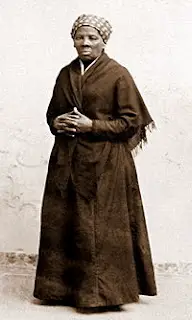
Harriet Tubman in 1885
By 1860, Tubman made 19 trips to the south and even rescued her own 70-year old parents from slavery. She earned the nickname “Moses” and “General Tubman” and was praised as one of the bravest people on earth.
Harriet Tubman During the Civil War:
As a woman and an African-American during the Civil War, Tubman’s options to help in the war effort were limited. In the early part of the war she worked as a spy for the Union army. She helped identify potential targets for the Union army in South Carolina, such as cotton stores and ammunition storage areas.
Tubman then went to Virginia and nursed wounded soldiers back to health at the local hospital for black soldiers.
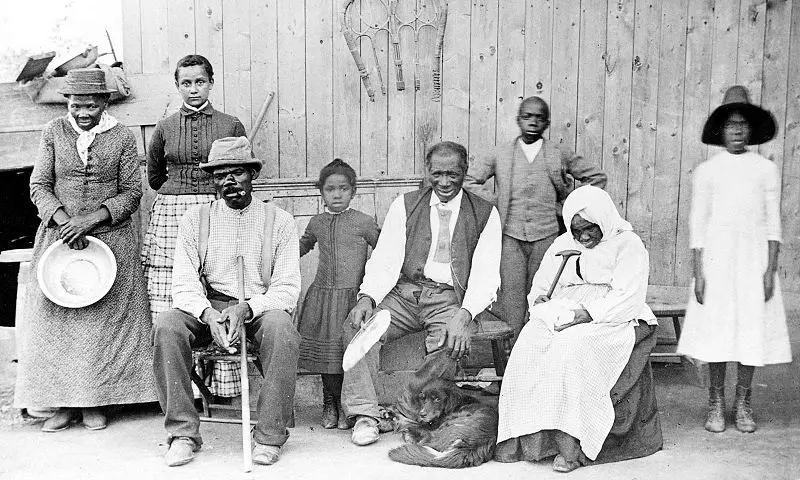
Harriet Tubman (far left) with her second husband and family in 1885
After returning to her home in New York by train one day, Tubman was assaulted by a racist train conductor who forced her to sit in the baggage car.
After the war, she published her biography, titled Harriet Tubman: The Moses of Her People with the help of a local school teacher in 1868.
In 1869, Tubman married a Civil War veteran named Nelson Davis. Davis was half her age and met Tubman when he was a boarder living in her house. They remained married until he died of tuberculosis in 1888.
The U.S. government initially denied Tubman a pension for her work as a spy and nurse during the Civil War, although she earned a widow’s pension after Davis passed away in 1888, but she was eventually awarded a pension for her war service in 1897.
Tubman became involved in the suffragist movement in the 1890s and became a delegate for the National Association of Colored Women.
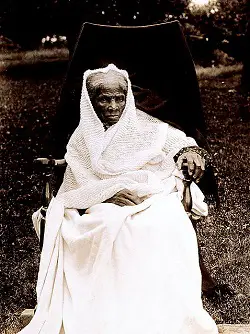
Harriet Tubman in 1911
In 1911, Tubman moved into a nursing home, the Harriet Tubman home, that her church had built on property she had donated. Tubman died of pneumonia in 1913 and was given a full military funeral at Fort Hill Cemetery in Auburn, New York.
For more information about Harriet Tubman, check out the following articles about the Best Books About Harriet Tubman and this timeline of Harriet Tubman’s life.
Sources:
Bradford, Sarah. Harriet Tubman: The Moses of Her People. Geo. R. Lockwood & Son, 1897.
“Harriet Tubman.” America’s Library. Library of Congress, www.americaslibrary.gov/aa/tubman/aa_tubman_subj.html
“Harriet Ross Tubman.” University at Buffalo, www.nsm.buffalo.edu/~sww/0history/hwny-tubman.html
“Harriet Tubman.” PBS.org, www.pbs.org/wgbh/aia/part4/4p1535.html

